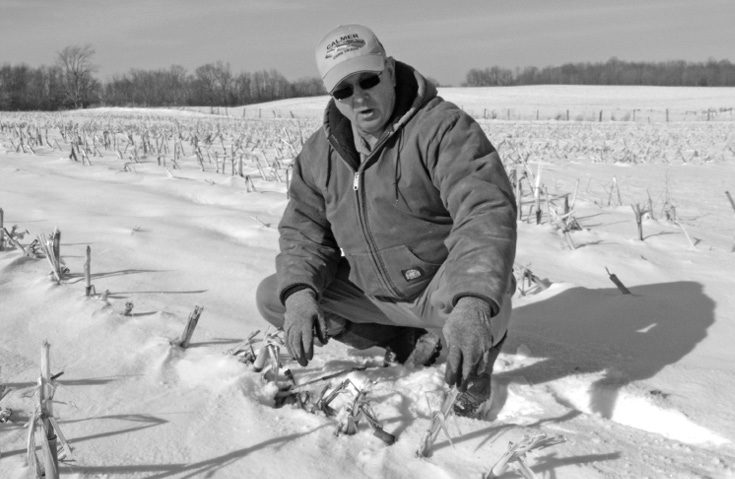No-Till Farmer
Get full access NOW to the most comprehensive, powerful and easy-to-use online resource for no-tillage practices. Just one good idea will pay for your subscription hundreds of times over.

Drainage is important in any tillage system, but even more crucial in no–till, which is why Ohio no-tiller Tom Clark makes sure drainage needs are taken care of on his fields.
He’s found that no tilling into a field that doesn’t have tile can be costly.
“Tiling helps control the water table and it gets plants off to a good start, which is even more critical in no-till’s cooler soils,” says Clark, a 30-year no-till veteran.
Clark no-tills near Marengo, Ohio, and works in north-central Ohio’s difficult clay soils. He’s found that small, poorly drained spots in fields affect the bottom line.
“There can be wet pockets that drown out the crop. Most plants don’t like wet feet,” he says.
Clark works with landlords to systematically install tile on the 1,200 acres he and his son Nathan farm. The Clarks own 300 acres of the total, and he and Nathan share equipment.
On the Morrow County fields, the typical configuration is 4-inch tile spaced 40 feet apart. The cost of the tile and installation ranges from $750 to $950 per acre, although tile projects with larger mains can total $1,000 per acre or more.
The landlords typically pay for the investment and get a return for the improvements in higher rent.
To offset the land-improvement costs, landlords sometimes tile wet areas first or spread the project over several years. One of Clark’s landlords spent 3 years tiling a 150-acre farm, with a third of the field tiled each…